It’s been a while since I had a good pumpkin harvest, and while my yield contains pretty small specimens, ravaged by squash bugs, it’s still better that most years past.
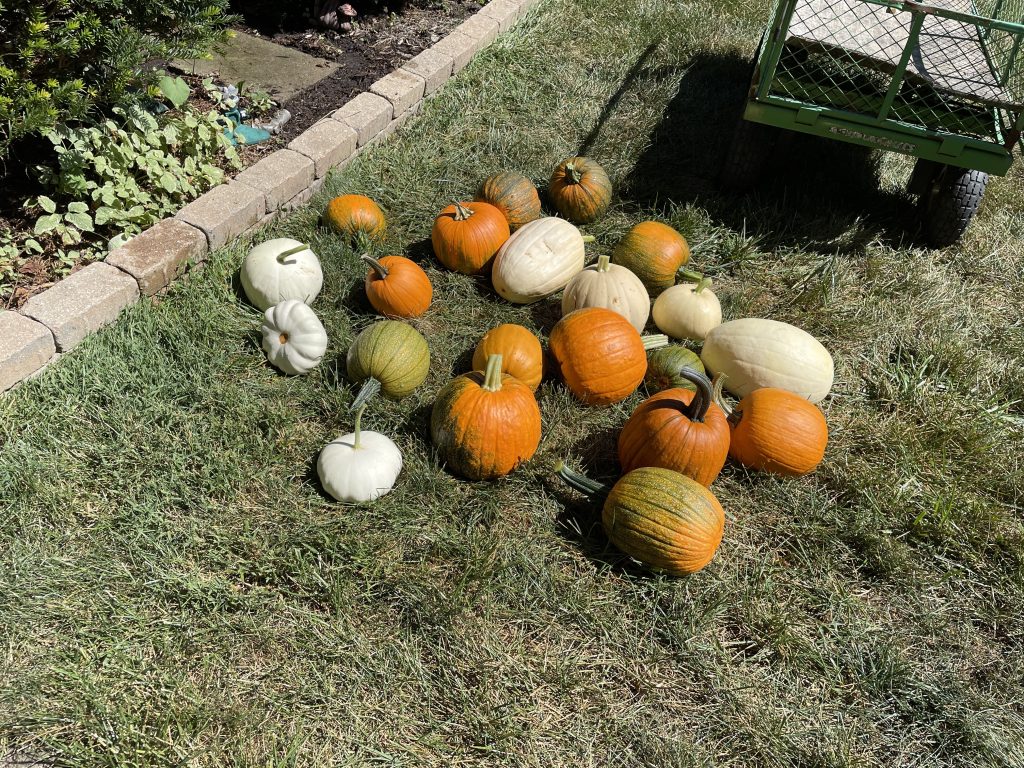
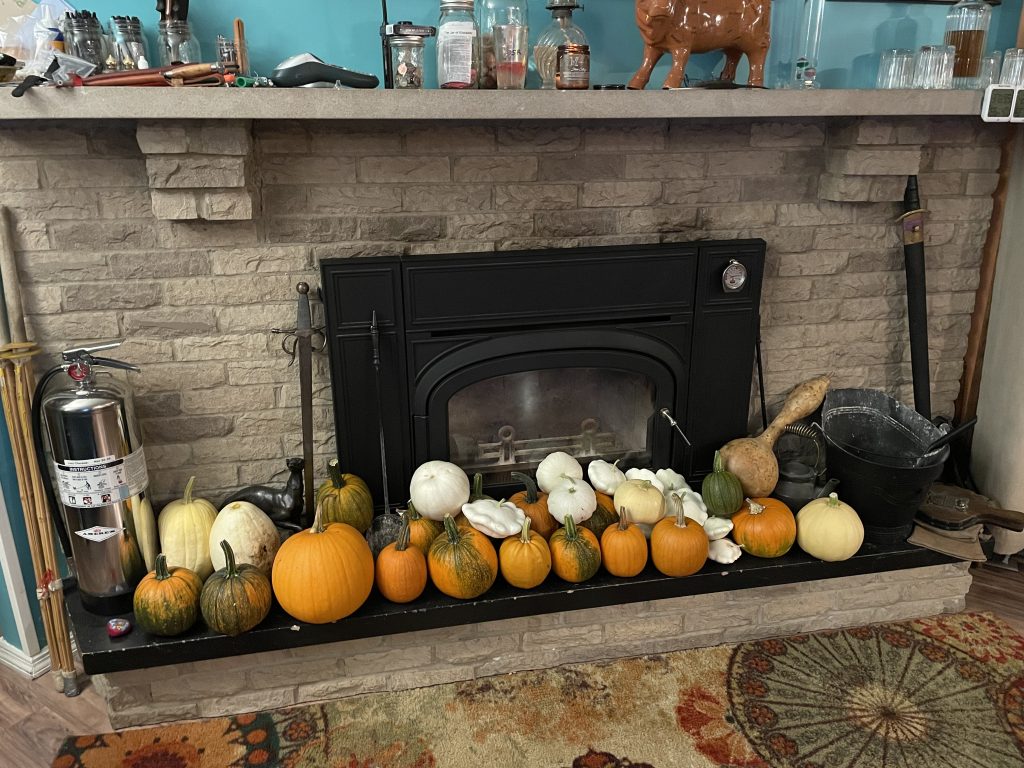
It’s a pretty pile of fall colors, perfect to usher in the season.
–Simon

Tales from Easement Acres
It’s been a while since I had a good pumpkin harvest, and while my yield contains pretty small specimens, ravaged by squash bugs, it’s still better that most years past.


It’s a pretty pile of fall colors, perfect to usher in the season.
–Simon
[Note to self: add this to the Quantitative Philosophy Index when it posts]
Remember those times when eating at restaurants was fun? I had attributed this to a combination of not having to eat mom’s boiled vegetables and not possessing any financial knowledge of a restaurant’s expense. Childhood, in essence, was the best time to eat out at restaurants.
But now, it’s usually disappointing. And there are so many more dining options out there than what was available to me as a kid! There has to be more to it.
So I sat down and compiled an arbitrary list. Here goes:
Given that the experience quality is defined by 5 operators:
Then:
D+E-(A+B+C) = Quality of the experience.
As these are mostly relative measures, attempts at quantification prove difficult. This approach also fails to represent why restaurants were fun before but suck now. No – a timeline representation is needed for this one:
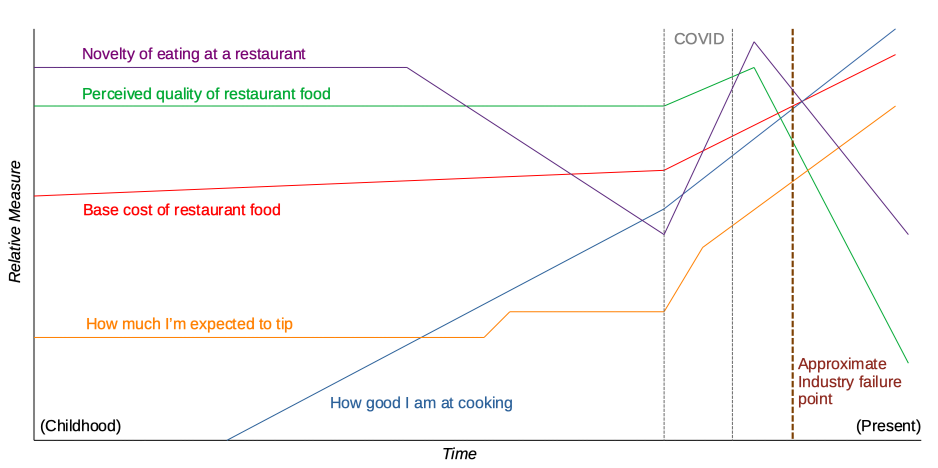
Now I’ll point out some observations having thought back through this timeline:
That said, here’s a final observation to further drive home the point: All of these dynamic variables chronologically, mostly, intersected a couple years back, which I’ve visually represented as the “Approximate industry failure point”. This was the moment at which dining out became almost entirely non-viable for me.
Everyone will have their own version of the graph, and perhaps restaurants still make sense to some people. But unless either the quality and novelty of fine dining drastically increase, or costs go way down, I don’t see this industry as a cost-effective source of entertainment for the foreseeable future.
–Simon
This was really tasty. I had had cold soups before, but found them unsettling and unsatisfying. Soups shouldn’t be cold.
But I had cucumbers and tomatoes on hand. Why not give it a go? After all, I have Alton Brown now at my digital culinary disposal. Seemed like a good starting point. Here’s his recipe: https://www.foodnetwork.com/recipes/alton-brown/gazpacho-recipe-1937573
With some slight modifications: powdered cumin, because Liz doesn’t much care for it. And serrano peppers instead of bell, because that’s what I had. But otherwise, it’s pretty true to the recipe.

Also the portions were a tad modest, so I’d increase it in the future. But I supplemented it with garlic bread and that did the trick. Will definitely try again when I have an overabundance of summer veggies.
–Simon
Every year there’s one, usually either a beefsteak or a brandywine. An early fruit, if unmolested by wildlife, will eventually become the largest of the season. Here are the winners from past years (it would not appear that I documented them all):
2017: Undefined
2019: 24.8oz
2021: 16.8oz
2023: 19.3oz
2024: 14.2oz
2019 still holds the record.
And pushing its way into 3rd place, muscling out 2021, is 2025! Yay!
2025: 17.2oz
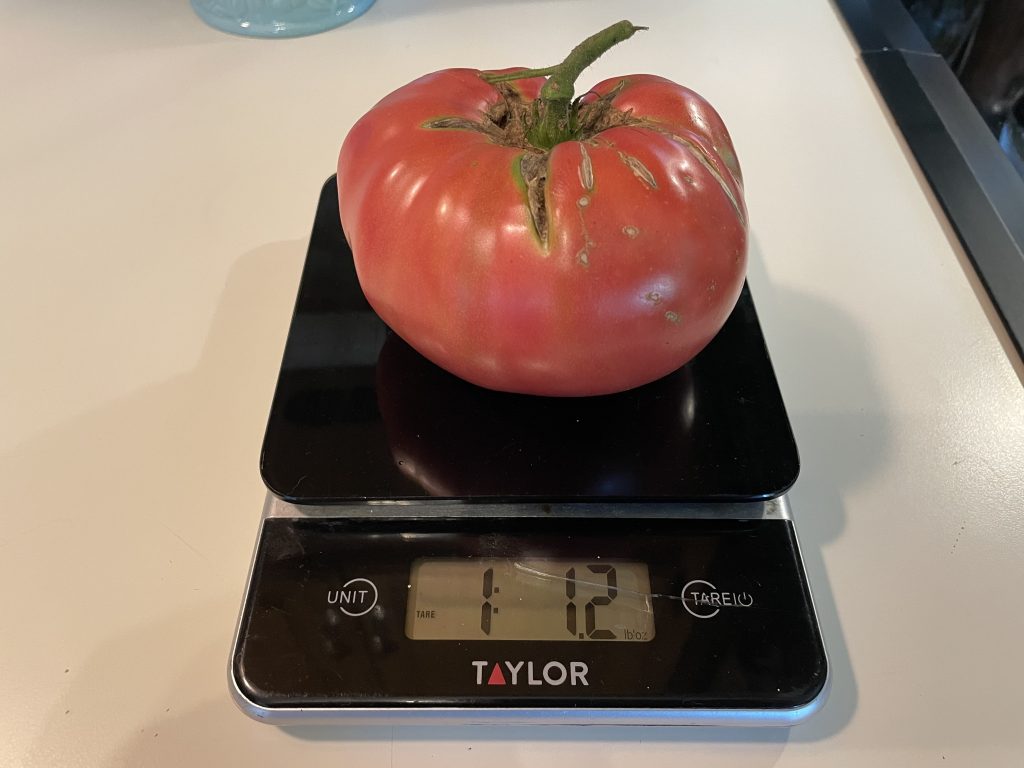
Not epic, but categorically glorious.
–Simon
Americans have an odd association with the Japanese. Following generational subsiding of WWII resentments, their culture crept into our cinema, represented as a dichotomy of both warriors and meditative perfectionists, personified in the Miyagi-type character (although technically Okinawan). Then apparently they became relentlessly career-oriented, who work themselves to suicide.
And from this toxic life path, Americans are oft compared as a sort of half-sibling, who admire their relentless capitalist pursuits and supposed ability to maintain their dignity of the soul while still contributing to the greater society. I can see it. Work forever to provide and go to church.
But I think we’re more like the Chinese. We approach capitalism in a similar manner of unsustainable growth and consolidation of the wealth therein produced, continue to allow those least suited to lead determine our government policies, and we hate each other (supposedly). And really, no one likes themselves, so dissenting ideologically with an entire culture is probably more telling of a similarity than a difference. (Don’t even get me started on Russia.)
But I also own a katana and aquascape my aquarium. So I’m not entirely disassociated. And then there’s also The Way of the Househusband, which resonates.
And bonsai. No, I don’t practice the art, but I’ve refined my own version: macro bonsai. Translated literally, that would sound like a paradox, but hear me out. As a non-native Ohioan, I like trees. Alas, they are expensive and slow to grow, but not the black locust!

Locusts have some “advantages” as suburban trees, depending on how you look at it. They’re colony plants, meaning they appear in non-forested areas before other trees, thereby starting the first stages of forestation. Obviously in areas where suburbanites don’t want trees, such as landscaped lawn where one’s landscaping company would charge extra for the bother of mowing around a tree, they’re undesirable. However, if one were to happen to appear in a desirable location, such as an open lot needing some shade, they present an opportunity to quickly attain canopy.
This is because they sprout from the ground as root suckers. A local parent plant, spreading its roots, will reproduce this way. The new tree, being attached to the parent, has access to the larger root system. So it grows quickly. Add to that the fact that locusts are legumes, and fertilization remains largely unnecessary. They’re completely self-reliant.
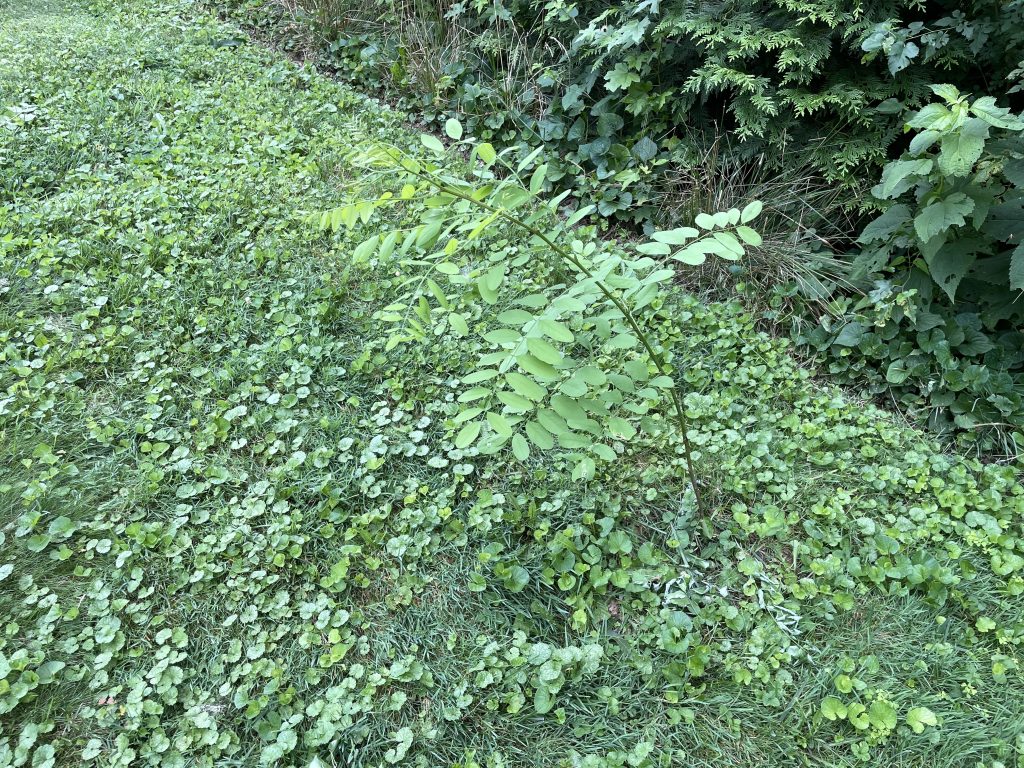
But they do need training. Following emergence, new growth is bushy. To obtain a tree shape, side branches need to be trimmed off as the plant grows. They’re also very thorny at this stage, but fortunately my trees are of the variety that the thorns stay small and disappear completely on larger trees. Regular trimming will also force upward growth, leading to quicker canopy.

Ultimately it’s a matter of personal taste as to which side branches should be left to grow, and each tree and its location is unique. But all side branches should be removed unless the growth is vertical, until the minimum desired height is achieved. In my case, my own height is the benchmark. If I can walk under the tree without ducking, then it’s at minimum required height and I start letting side branches above this height start to grow and fill out the canopy.

Beyond this, it’s just a matter of letting it grow until it becomes the electric company’s problem. Total time involved: 2-3 years. Not bad for a free tree, and it’ll grow faster than anything manually planted.
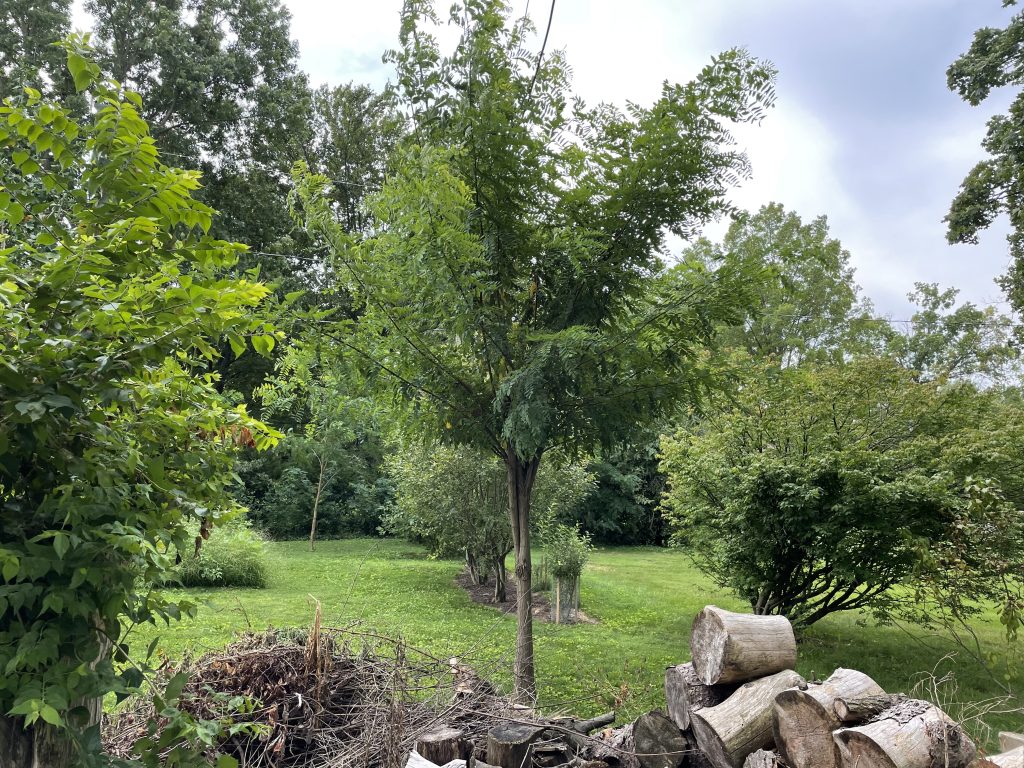
It’s a much shorter timeframe, and using much larger trees (a native, in fact), than bonsai. I think I’ll call it dendroforming instead, to give it a more western type nomenclature. It certainly isn’t Japanese, but I’ll give them a respectful nod at their influence.
–Simon